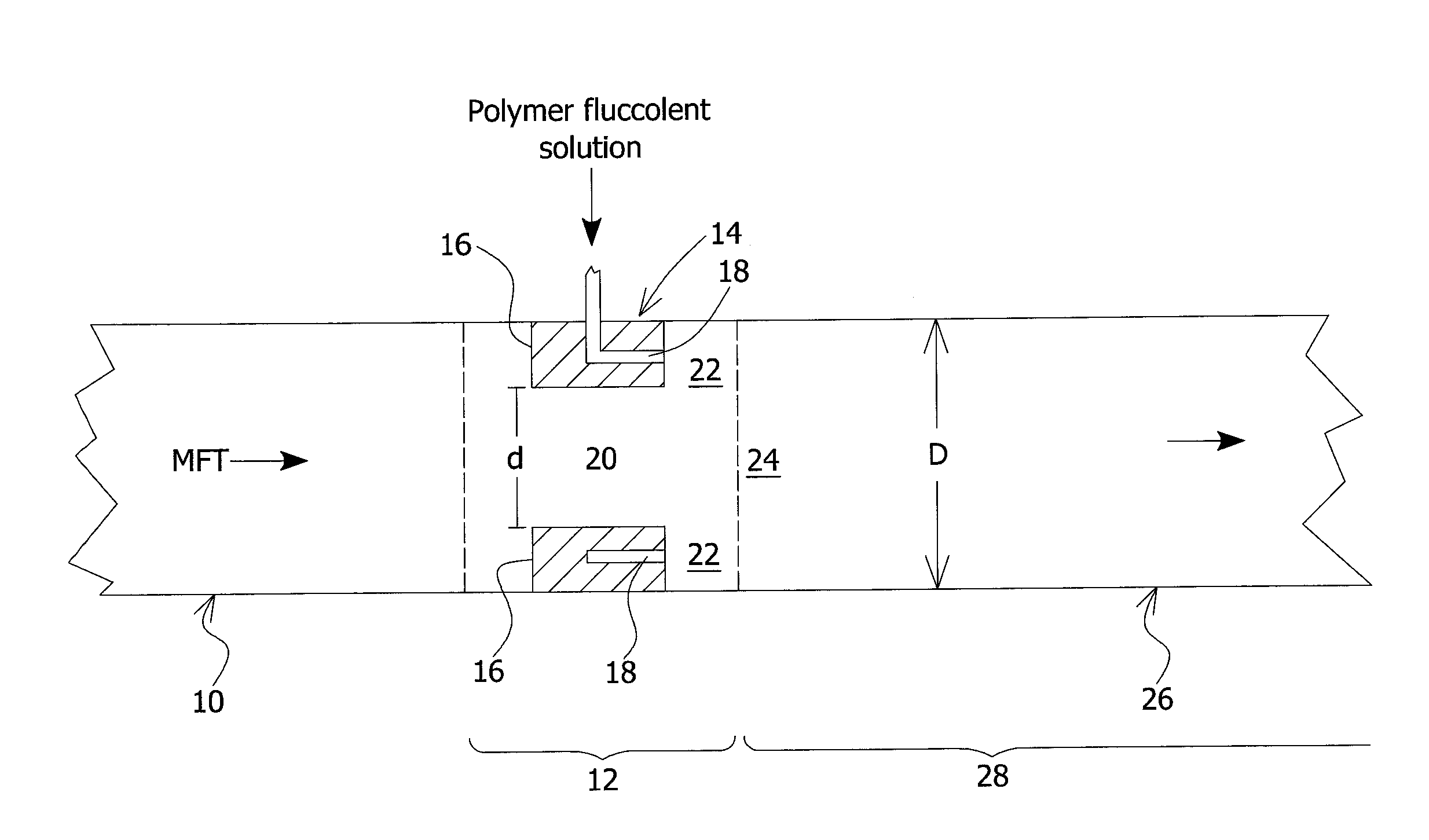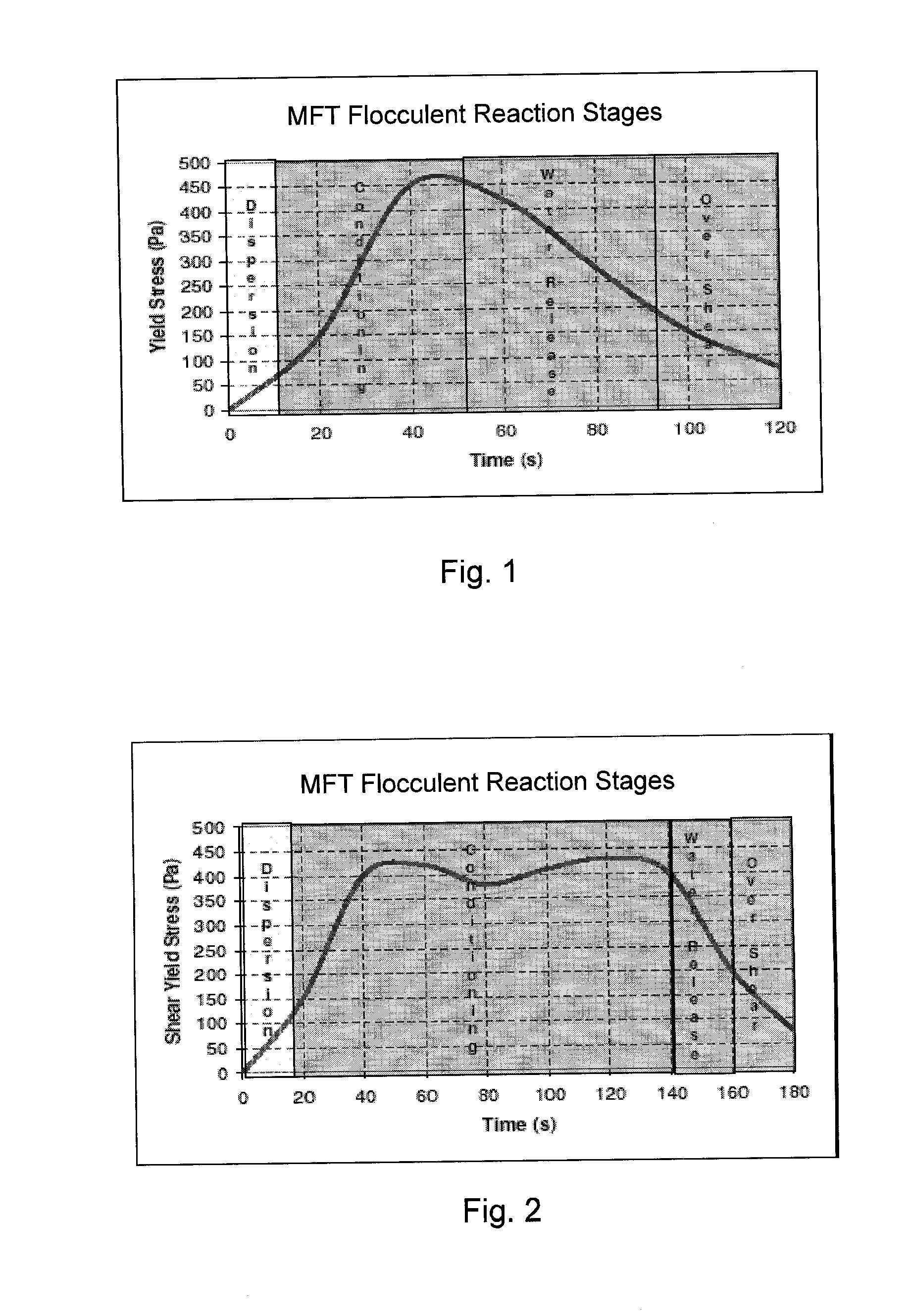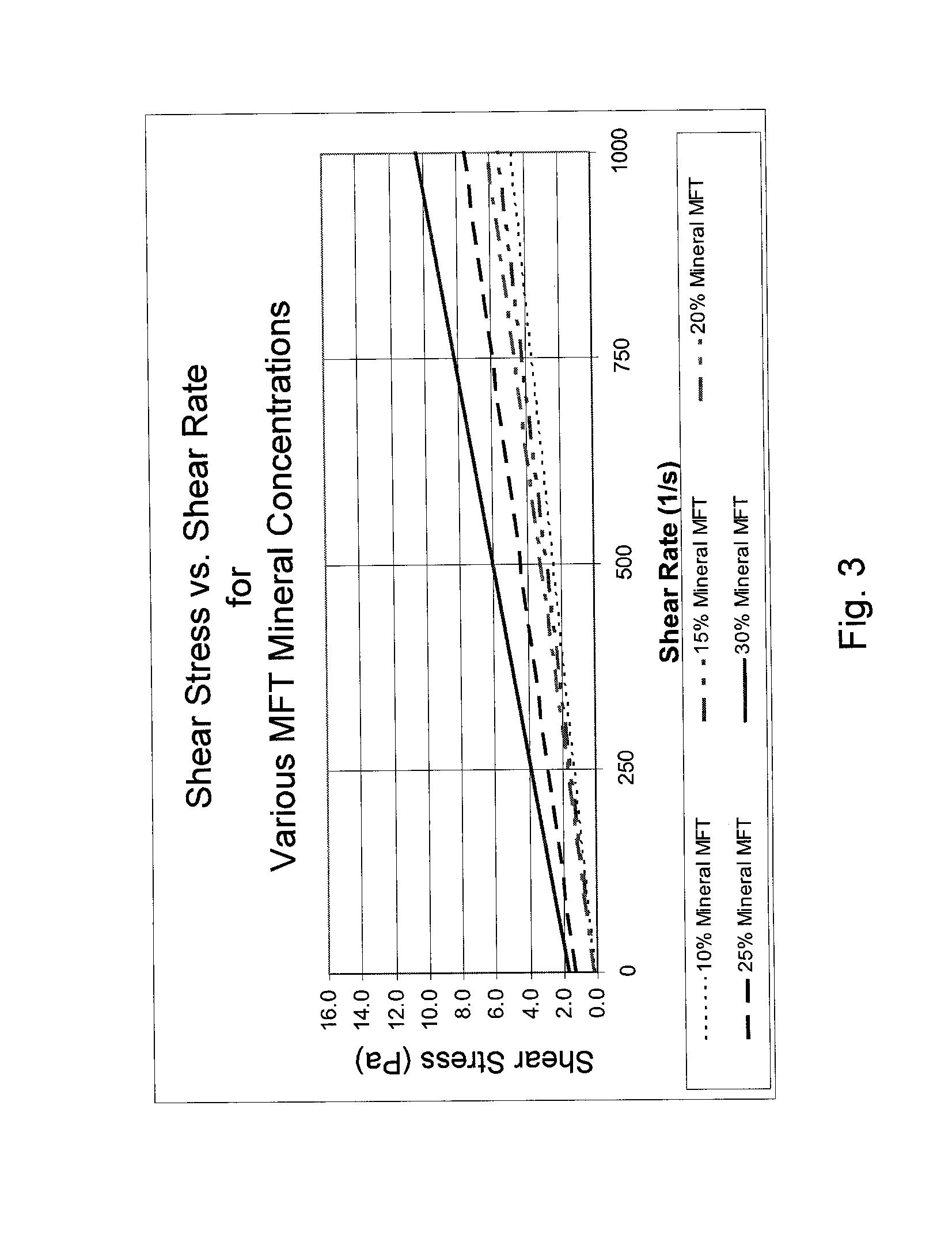Process for Flocculating and Dewatering Oil Sand Mature Fine Tailings
a technology of oil sand and mature tailings, which is applied in the direction of separation processes, dewatering/demulsification with chemical means, and waste water treatment from quaries, etc. it can solve the problems of slow consolidation rate, complex undertakings in pond location, level control and reclamation, and limit the options for reclaiming tailings ponds. achieve the effect of increasing the yield shear stress
- Summary
- Abstract
- Description
- Claims
- Application Information
AI Technical Summary
Benefits of technology
Problems solved by technology
Method used
Image
Examples
example 1
[0150]As mentioned in the above description, lab scale stirred tank tests were conducted to assess mixing of a flocculent solution into MFT. The lab mixer was run at initial speeds of 100 RPM or 230 RPM. The dosage of 30% charge anionic polyacrylamide-polyacrylate shear resistant co-polymer was about 1000 g per dry ton. FIGS. 13 and 14 show that the fast initial mixing shortens the yield stress evolution to enable dewatering and also increases the water release from the MFT.
example 2
[0151]As mentioned in the above description, lab scale stirred tank tests were conducted to assess mixing of different dosages of flocculent solution into MFT. The lab mixer was run at speeds of 100 RPM or 230 RPM for flocculent solutions containing different doses of dissolved flocculation reagent. The dosages of flocculent ranging from 800 to 1200 g per dry tonne of MFT indicated adequate mixing and flocculation for dewatering. The flocculation reagent here was a 30% charge anionic polyacrylamide-polyacrylate shear resistant co-polymer with a molecular weight over 10,000,000. A dosage range of 1000 g per dry tonne ±20% was appropriate for various 30% charge polyacrylamides for MFT with clay content of 50 to 75%.
example 3
[0152]As mentioned in the above description, continuous flow pipeline reactor tests were conducted. Results are shown in FIG. 15 comparing high and low flow rates. A 34 wt % solids MFT was pumped through a 2 inch diameter pipe at a flow rate of 26 LPM for the low flow test and 100 LPM for the high flow test. A 0.45% organic polymer flocculent solution was injected at 2.6 LPM for the low flow test and at 10 LPM for the high flow test. The distance from injection to deposition was 753 inches or 376.5 pipe diameters. The 2 inch long orifice mixer had an orifice to downstream pipe diameter ratio d / D=0.32 with six 0.052 inch diameter injectors located on a 1.032 inch diameter pitch circle. For the high flow test the six injector diameters were increased to 0.100 inch.
PUM
| Property | Measurement | Unit |
|---|---|---|
| Fraction | aaaaa | aaaaa |
| Fraction | aaaaa | aaaaa |
| Temperature | aaaaa | aaaaa |
Abstract
Description
Claims
Application Information
 Login to View More
Login to View More - R&D
- Intellectual Property
- Life Sciences
- Materials
- Tech Scout
- Unparalleled Data Quality
- Higher Quality Content
- 60% Fewer Hallucinations
Browse by: Latest US Patents, China's latest patents, Technical Efficacy Thesaurus, Application Domain, Technology Topic, Popular Technical Reports.
© 2025 PatSnap. All rights reserved.Legal|Privacy policy|Modern Slavery Act Transparency Statement|Sitemap|About US| Contact US: help@patsnap.com



